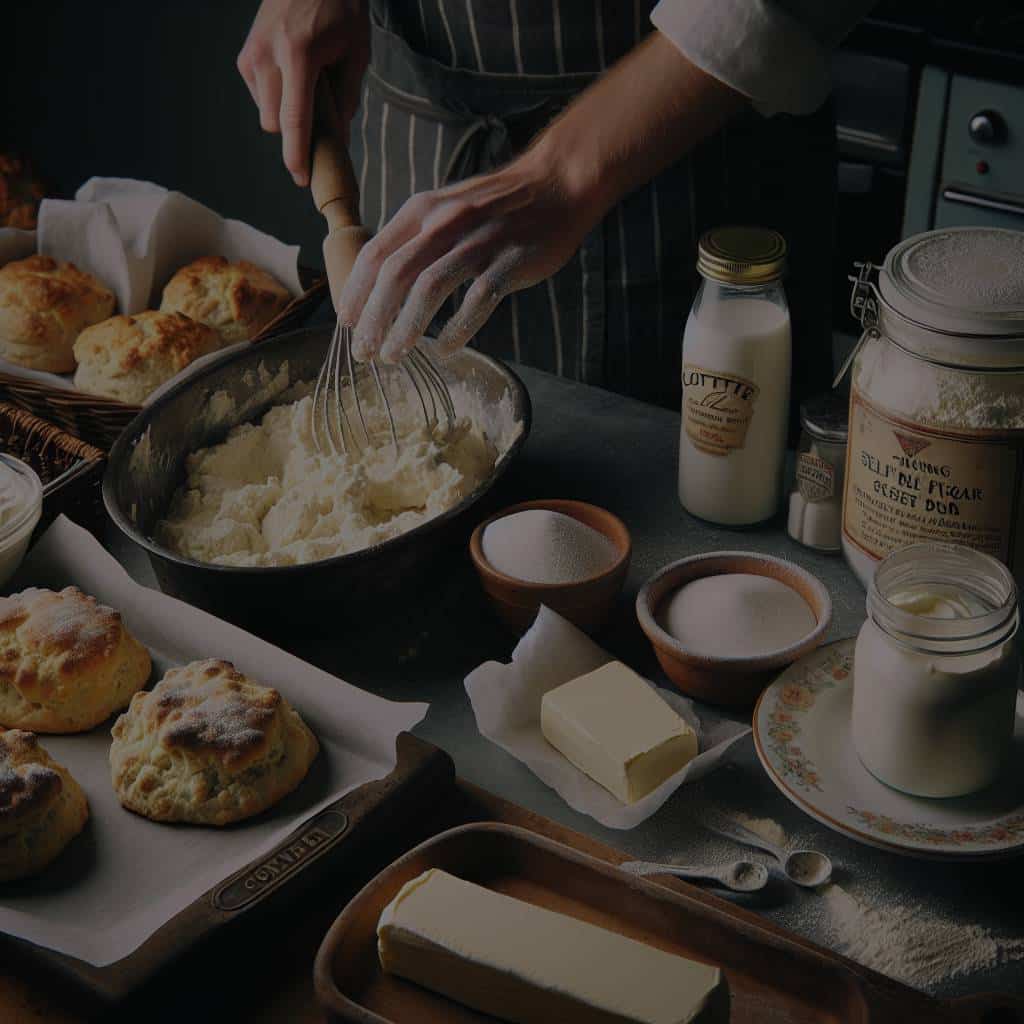What’s the Best Way to Make Authentic British Scones with Clotted Cream?

From the misty hills of the English countryside to the bustling streets of London, the humble scone has been a staple in British tea times for centuries. Whether you prefer them studded with currants, drizzled in honey, or simply slathered with clotted cream and jam, scones are a versatile treat that can satisfy any palate. Today, we’re going to delve into the delicious world of scones and provide you with a step-by-step guide to making the perfect English scone. Gather your butter, flour, and milk; it’s time to start baking!
1. Understanding the Importance of Ingredients
Before we dive into the recipe, let’s take a moment to understand the significance of each ingredient. When it comes to baking, every ingredient serves a specific purpose and contributes to the overall texture and flavor of the scone.
Avez-vous vu cela : Can You Bake an Authentic English Victoria Sponge Cake with a Fresh Berry Compote?
Flour
The type of flour you use will have a significant impact on the texture of your scones. For a light and fluffy scone, opt for all-purpose flour. Make sure it’s fresh; old flour can make your scones taste stale.
Sugar
While scones aren’t overly sweet, a bit of sugar enhances their flavor. Remember, the sugar will also counterbalance the tartness of the jam and the richness of the clotted cream.
Dans le meme genre : What Techniques Can Result in a Crisp, Buttery Scottish Shortbread?
Butter
Butter adds richness and flakiness to your scones. It should be cold to ensure the scones have a light and airy texture.
Milk
Milk tenderizes the dough and gives your scones a soft and crumbly texture. You can also use it to brush the tops of your scones before baking to give them a beautiful golden sheen.
Egg
Eggs provide structure to your scone dough and make your scones rise. They also add moisture, keeping your scones from becoming too dry.
Baking Powder
Baking powder is the leavening agent in scones. It reacts with the liquid in the dough, creating bubbles that make your scones rise and become light and fluffy.
2. Preparing the Dough
Now that we’ve discussed the importance of each ingredient, let’s move on to the process of making the scone dough.
Start by preheating your oven to 220°C/425°F. This high temperature ensures that the scones rise quickly and develop a nice golden crust.
In a large bowl, combine your flour, sugar, and baking powder. Cut your cold butter into small cubes and add it to the flour mixture. Using your fingers, work the butter into the flour until the mixture resembles coarse breadcrumbs.
In a separate bowl, whisk together your milk and eggs. Gradually add this to the flour mixture, stirring until a dough starts to form. Be mindful not to overwork the dough; this can result in tough scones.
Once your dough has come together, transfer it to a lightly floured surface and gently knead it a few times to bring it together. Pat the dough into a rectangle about 1 inch thick.
3. Baking the Scones
Cut the dough into rounds using a biscuit cutter or an upside-down glass. Place the rounds on a baking sheet lined with parchment paper, leaving a bit of space between each one.
Brush the tops of the scones with a bit of milk. This will give your scones a lovely golden color. Bake the scones in your preheated oven for about 15-20 minutes, or until they’re golden brown and well risen.
4. Serving Scones: The British Way
Now comes the best part: serving and eating your scones! In Britain, scones are traditionally served with clotted cream and jam. But what is clotted cream, you might ask? It’s a thick, rich cream with a consistency similar to soft butter. It has a decadent, slightly sweet flavor that pairs perfectly with the tartness of the jam.
To serve your scones the British way, cut each scone in half horizontally. Spread a generous amount of clotted cream on one half, then top with your favorite jam. Place the other half of the scone on top, and your British scone with clotted cream is ready to be enjoyed!
In Britain, scones are often served with a cup of strong, hot tea. So, make yourself a brew, sit back, and enjoy your homemade British scones.
5. Perfecting Your Scones: Tips and Tricks
While scone-making isn’t overly complex, there are a few tips and tricks that can help you achieve perfection.
Firstly, remember to use cold butter. This helps create pockets of steam as the scones bake, leading to a flaky texture. Secondly, don’t overwork your dough; a light hand will yield a softer scone. Lastly, make sure to preheat your oven. A hot oven helps the scones rise quickly and develop a nice crust.
In terms of flavor, feel free to get creative. Add-ins like currants, dried cranberries, or even cheese can take your scones to the next level. Just remember to add these to your flour mixture before adding the milk and egg.
While we’ve covered the basics, making scones is an art that takes practice. But with these tips and tricks, you’re well on your way to mastering the art of making authentic British scones. So, don your apron and get ready to bake – it’s time to make your British tea times more indulgent with these delightful treats!
6. The Role of Clotted Cream in British Scones
Central to the enjoyment of English scones is the clotted cream, a staple of British afternoon tea. This cream is a unique dairy product, known for its rich, creamy consistency and subtly sweet flavor. Clotted cream, or "Devonshire cream," is made by indirectly heating full-cream cow’s milk using steam or a water bath and then leaving it in shallow pans to cool slowly. This process causes the cream to clot, hence the name ‘clotted cream.’
Clotted cream has a minimum fat content of 55%, making it incredibly thick and indulgent. It has a pale yellow color, similar to butter, but with a slightly crumbly texture. This cream is often described as having a nutty, cooked milk flavor, which lends itself beautifully to the tartness of jam and the richness of scones.
When serving your scones, clotted cream is traditionally applied to the scone before the jam. However, in some parts of the UK, particularly in Cornwall, it’s customary to spread the jam first followed by the clotted cream. Either way, the combination of crumbly scone, velvety clotted cream, and vibrant jam creates a harmony of textures and flavors that’s hard to resist.
If you can’t find clotted cream in your local store, you can substitute it with mascarpone or whipped heavy cream. However, for the true authentic British scone experience, clotted cream is irreplaceable.
7. Conclusion: The Joy of Making Authentic British Scones
Making authentic British scones with clotted cream is a tradition that transcends borders. Not only does it offer a delicious treat to enjoy at teatime, but it also provides a small taste of British culture and history.
Baking your own scones can seem challenging, especially if you’re a beginner, but remember that practice makes perfect. Pay attention to your ingredients, don’t rush the process, and remember to take pleasure in the act of baking itself. Learning to make scones is not just about following a recipe; it’s about honing your senses, developing your skills, and discovering your personal preferences.
From understanding the importance of each ingredient to mastering the process of preparing the dough and baking the scones, you’re now equipped with all the knowledge you need to make delicious, authentic scones. Do not forget the clotted cream and jam, as they add a significant touch of richness and flavor to the scones.
So, with your fresh, homemade scones and a pot of hot tea, sit back and enjoy your very own British afternoon tea experience. Whether you’re baking for a special occasion or simply indulging in a personal treat, these scones are sure to transport you to the quaint countryside of Britain, one bite at a time. Happy baking!
